- Sorry, this product is unavailable.
-

-
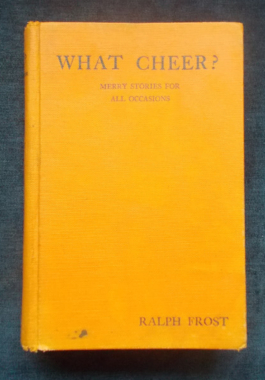
What Cheer? Ralph Frost
$40.00Merry stories for all occasions - some even a little bit saucy for 1929 and some not very P.C. for today's standards! Most are good fast snappies: Young Lady: When I marry, it will be to a man who is polished, upright and grand. Rejected Suitor: You don't want a man - you want a piano! Or...Bus Conductor to Young Lady: If you want to go to Hammersmith, Miss, you're on the wrong bus. Young Lady: But the bus has Hammersmith written on it! Conductor: It's got Nestle's Milk written on it as well, but we're not going to Switzerland. As you see, they are mostly nice clean ones that reflect the humour of the 1920s - making this a social time travel trip. -
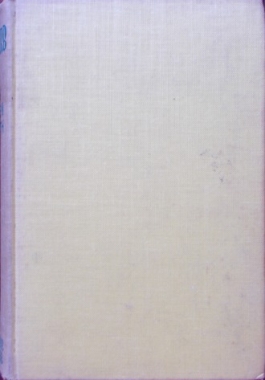
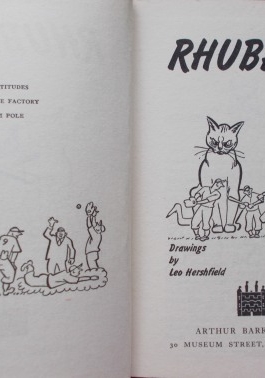
Rhubarb: H. Allen Smith
$15.00Rhubarb is a big cat who can lick the hell out of any dog that ever lived. His owner, eccentric dog-hating millionaire Thad Banner loves Rhubarb more than his 'hep-cat' daughter and in his will, he leaves Rhubarb his fortune and his big-league Baseball club, the New York Loons. And THAT'S where the trouble really begins! With fabulously funny illustrations by Leo Hershfield. -
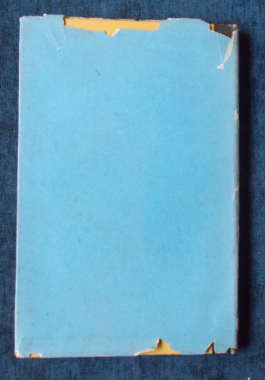
 First published in 1950 and costing 9/6, this book addresses Australia's Fuel and Power problem and studies the provision of energy and its effect on national development. It also covers the production of oil from coal and the prospect of finding oil in Australia. Illustrated with maps and diagrams.
First published in 1950 and costing 9/6, this book addresses Australia's Fuel and Power problem and studies the provision of energy and its effect on national development. It also covers the production of oil from coal and the prospect of finding oil in Australia. Illustrated with maps and diagrams. -
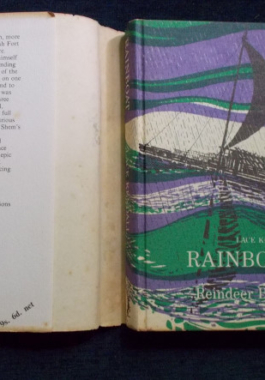
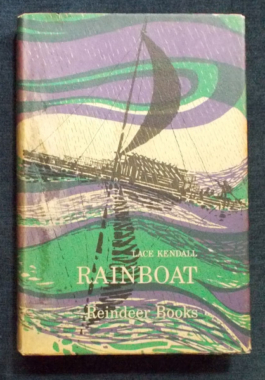
Rain Boat: Lace Kendall
$90.00The people of Spanish Fort, Florida, had never seen such rain before. Young Edward Ames is washed away, eventually landing in the company of the two Morse children on one of the few remaining areas of high ground. Many days later, the children are rescued by Shem, a mysterious dark skinned stranger, a kind man with a curious ambition. And his cargo is strange - a boatload of animals. -
 Mikes, Hungarian immigrant to Britain, was always bewildered by the English and their customs. He took it in stride - eventually - and began his observations of British life and thence onward to encompass the rest of the world. He realises that people are not only funny, but they're at their funniest when trying to be serious. Mikes went to the United Nations and found them all being hilariously serious!
Mikes, Hungarian immigrant to Britain, was always bewildered by the English and their customs. He took it in stride - eventually - and began his observations of British life and thence onward to encompass the rest of the world. He realises that people are not only funny, but they're at their funniest when trying to be serious. Mikes went to the United Nations and found them all being hilariously serious! -
 In 1973, ABC Radio broadcast a series of radio talks - Heresies. The series featured provocative and often unorthodox views of social, political economic and cultural issues, often challenging established opinion. It was intended as a medium for ideas, rather than a forum for prominent public figures. Featured in this collection: Professor Frederick May: The Revival of the Cliche and Frolic of Painted Dolls; Rev. Norman Webb: The End of History and Man has Come Of Age; Beatrice Faust: Sex - Common Sense or Popular Fallacy and Nice Girls Do; Helen Palmer: If You Can't Measure It, It Doesn't Exist and many more.
In 1973, ABC Radio broadcast a series of radio talks - Heresies. The series featured provocative and often unorthodox views of social, political economic and cultural issues, often challenging established opinion. It was intended as a medium for ideas, rather than a forum for prominent public figures. Featured in this collection: Professor Frederick May: The Revival of the Cliche and Frolic of Painted Dolls; Rev. Norman Webb: The End of History and Man has Come Of Age; Beatrice Faust: Sex - Common Sense or Popular Fallacy and Nice Girls Do; Helen Palmer: If You Can't Measure It, It Doesn't Exist and many more. -
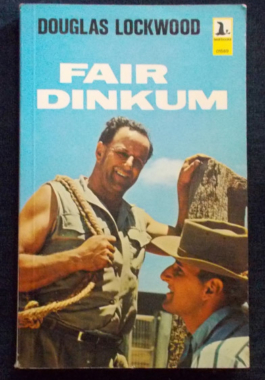 A collection of not-so-tall stories collected in the course of eighteen years in the rugged outback of the Northern Territory, where distances are measured in pints of water and time is hardly noticed. There's gold diggers, old men some of them, still fishing for their buckets of ore at the bottom of deep shafts; you should never to go see them without a 'calling card' - they come in bottles from the brewery. There are also the stock drovers, whose job it is to drive thousands of cattle across the country for up to a thousand miles or so. These and many various characters, white men, aboriginals, and half castes are the author's neighbours. But even such a bare and primitive area is not immune from the troubles of the world, and, just after Pearl Harbour in 1942, the Japanese brought the war to Darwin. Lockwood was there to write an eye-witness account for his paper. Then in 1954, came the world shaking bombshell of the Petrov story. Once again, the author was on the spot, in Darwin, to broadcast it to the world. These, and many other stories, some historical, some tragic, some amusing, some supernatural, but all of them fascinating - and fair dinkum. Illustrated with black and white photographs.
A collection of not-so-tall stories collected in the course of eighteen years in the rugged outback of the Northern Territory, where distances are measured in pints of water and time is hardly noticed. There's gold diggers, old men some of them, still fishing for their buckets of ore at the bottom of deep shafts; you should never to go see them without a 'calling card' - they come in bottles from the brewery. There are also the stock drovers, whose job it is to drive thousands of cattle across the country for up to a thousand miles or so. These and many various characters, white men, aboriginals, and half castes are the author's neighbours. But even such a bare and primitive area is not immune from the troubles of the world, and, just after Pearl Harbour in 1942, the Japanese brought the war to Darwin. Lockwood was there to write an eye-witness account for his paper. Then in 1954, came the world shaking bombshell of the Petrov story. Once again, the author was on the spot, in Darwin, to broadcast it to the world. These, and many other stories, some historical, some tragic, some amusing, some supernatural, but all of them fascinating - and fair dinkum. Illustrated with black and white photographs. -
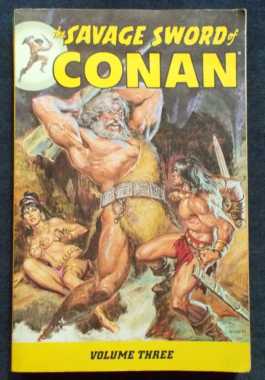 An omnibus edition of thirteen Conan tales adapted by Roy Thomas and presented as graphic novels. This volume includes: Cimmeria; The Jewels Of Gwahlur; Beyond The Black River; The Children Of Jebbhel Sag; The Blood Of The Gods; Child Of Sorcery; The Scarlet Citadel; The Flame Knife; The Ghouls Of Yanaidar; The Curse Of The Monolith; The Lair Of The Ice Worm; Black Tears; Hawks Over Shem; The Hyborean Age. Artists: Barry Windsor-Smith; Dick Giordano; John Buscema; Tony Dezuniga; Alfredo Alcala; Ernie Chan; Frank Brunner; Gene Colan; Pablo Marcos; Carmine Infantino and Tim Conrad. Adapted from the stories by Robert E. Howard, L. Sprague de Camp, Lin Carter and Christy Marx. Front cover art by Earl Norem. Back cover art by Keith Parkinson.
An omnibus edition of thirteen Conan tales adapted by Roy Thomas and presented as graphic novels. This volume includes: Cimmeria; The Jewels Of Gwahlur; Beyond The Black River; The Children Of Jebbhel Sag; The Blood Of The Gods; Child Of Sorcery; The Scarlet Citadel; The Flame Knife; The Ghouls Of Yanaidar; The Curse Of The Monolith; The Lair Of The Ice Worm; Black Tears; Hawks Over Shem; The Hyborean Age. Artists: Barry Windsor-Smith; Dick Giordano; John Buscema; Tony Dezuniga; Alfredo Alcala; Ernie Chan; Frank Brunner; Gene Colan; Pablo Marcos; Carmine Infantino and Tim Conrad. Adapted from the stories by Robert E. Howard, L. Sprague de Camp, Lin Carter and Christy Marx. Front cover art by Earl Norem. Back cover art by Keith Parkinson. -
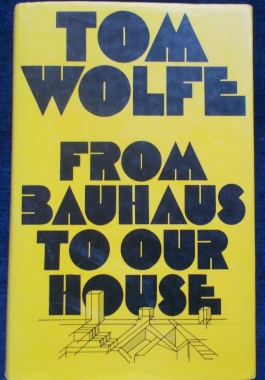
The irrepressible Wolfe has a satiric 'go' at the pretensions of Bauhaus art, attitudes and architecture. 'Starting from zero', 'bourgeois', the Cubists, Fauvists, Secessionists and every 'ism' comes under the gun, including Post-Modernism. Wolfe follows architectural design from Europe to America where Bauhaus was embraced in earnest and explores, with due irony, the vast contradiction between the bare, spare impersonal and abstract Bauhaus architecture and the exuberant, muscle-flexing populace that it serves. Illustrated with black and white photos
-
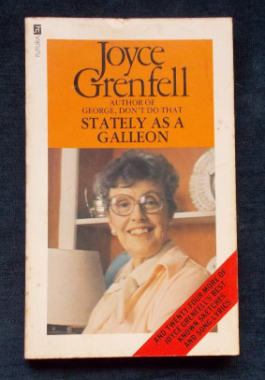 A fabulous collection of over two dozen of Joyce Grenfell's well-known sketches and song lyrics, including Stately As A Galleon, Shirley's Girlfriend, Thought For Today, At The Laundrette and I'm Going To See You Today. Often cheeky, sometimes sly and satirical, often poking fun at the sacred cows of the English and all have a point to make.
A fabulous collection of over two dozen of Joyce Grenfell's well-known sketches and song lyrics, including Stately As A Galleon, Shirley's Girlfriend, Thought For Today, At The Laundrette and I'm Going To See You Today. Often cheeky, sometimes sly and satirical, often poking fun at the sacred cows of the English and all have a point to make. -
 Holmes presents as an aristocratic, learned and garrulous denizen (a man of letters, of course) of a New England boarding house holds forth to fellow residents at his breakfast-table on various topics, including the advantages of old age, how to handle conversation, matters of aesthetics, religion, poetry, science, the character of America and Boston, ships, shoes and sealing wax...A presentation of Holmes' discursive rants into something approaching a novel, and therefore readable. Poet, physician, philosopher and essayist, Holmes also contributed greatly to medical research and reform. He was a member of the Fireside Poets and regarded as one of the brilliant writers of his time.
Holmes presents as an aristocratic, learned and garrulous denizen (a man of letters, of course) of a New England boarding house holds forth to fellow residents at his breakfast-table on various topics, including the advantages of old age, how to handle conversation, matters of aesthetics, religion, poetry, science, the character of America and Boston, ships, shoes and sealing wax...A presentation of Holmes' discursive rants into something approaching a novel, and therefore readable. Poet, physician, philosopher and essayist, Holmes also contributed greatly to medical research and reform. He was a member of the Fireside Poets and regarded as one of the brilliant writers of his time. -
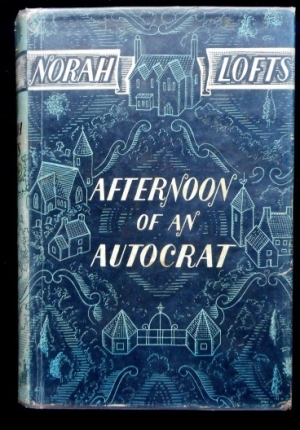 Sir Charles Augustus Shelmadine was an autocrat. He ruled his village with a firm but kindly hand - instructing his tenants on their crops, their children and their love affairs. And when he died and the new Squire came, the village stirred uneasily. For the new Squire had strange ideas - and even stranger friends - friends like Mr. Mundford who never seemed to grow any older and whose name was linked with the terrible Hell Fire Club. And Mr. Mundford was interested in too many things that should not have concerned him... like the ruins of the old Roman temple... and what happened in the village on All-Hallow's Night...and in the silent, amber-eyed young woman called Damask Greenaway.
Sir Charles Augustus Shelmadine was an autocrat. He ruled his village with a firm but kindly hand - instructing his tenants on their crops, their children and their love affairs. And when he died and the new Squire came, the village stirred uneasily. For the new Squire had strange ideas - and even stranger friends - friends like Mr. Mundford who never seemed to grow any older and whose name was linked with the terrible Hell Fire Club. And Mr. Mundford was interested in too many things that should not have concerned him... like the ruins of the old Roman temple... and what happened in the village on All-Hallow's Night...and in the silent, amber-eyed young woman called Damask Greenaway. -
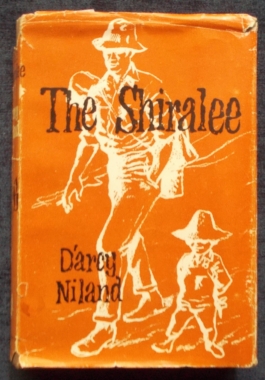
The Shiralee: Darcy Niland
$10.00A shiralee is a swag, a burden - and Macauley tramps through the back towns of New South Wales, looking for work, with his swag and his shiralee - his four year old daughter, Buster, taken from her loose-living mother by Macauley in a fit of vengeful rage. Buster is a bundle of loyalty, fortitude and natural childishness, yet she is no joy to Macauley, who treats her with uncompromising firmness. She must go on walking with him; she must stop her chattering when he wants quiet; she must not complain. But he has a grudging affection for her, an affection which grows without his realising it - until it is threatened. Now, not only must he admit his love for his daughter, his shiralee, but he must also realise how many true friends he really has. Here are other very real Australian characters: shopkeepers, stock agents, publicans, shearers, ex-fighters - all set against the Australian bush background of the 1950s. Niland's first novel, filmed twice. -
 Bride-to-be Sophie is on a quest to find her father before the big day. The only problem is - she's not sure who he is! After reading her mother's diary, she narrows it down to three great loves. So she invites them all - knowing her mother would not approve - and tries to conceal their presence...but it's not long until the secret's out!
Bride-to-be Sophie is on a quest to find her father before the big day. The only problem is - she's not sure who he is! After reading her mother's diary, she narrows it down to three great loves. So she invites them all - knowing her mother would not approve - and tries to conceal their presence...but it's not long until the secret's out! -
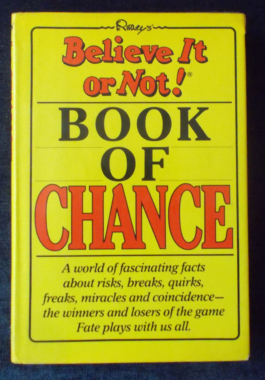 Before the Darwin Awards, there was Ripley's world of fascinating facts about risks, breaks, quirks, freaks and miracles. Such as... Minnie Gawell, who, in drawing a raffle, picked her own numbers four times in succession; if Bram Stoker had not eaten crab for his dinner (which gave him awful nightmares) the world would never have had Frankenstein; and the refugees from floods in Pakistan who received a supply of brassieres. Over 300 pages of the very weird but very true. With illustrations and photographs.
Before the Darwin Awards, there was Ripley's world of fascinating facts about risks, breaks, quirks, freaks and miracles. Such as... Minnie Gawell, who, in drawing a raffle, picked her own numbers four times in succession; if Bram Stoker had not eaten crab for his dinner (which gave him awful nightmares) the world would never have had Frankenstein; and the refugees from floods in Pakistan who received a supply of brassieres. Over 300 pages of the very weird but very true. With illustrations and photographs. -
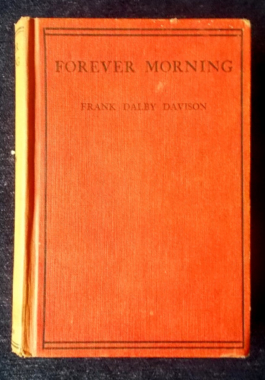 The principal characters in the story are Doris Brunton and Andy with other characters existing mainly for contrast. There is no sickly sentimentalism, the love and romance being concerned with the hero's battle against harsh reality. Set in the sheep country of New South Wales and Queensland with distinctive characterisations and the eternal atmosphere of the Australian bush.
The principal characters in the story are Doris Brunton and Andy with other characters existing mainly for contrast. There is no sickly sentimentalism, the love and romance being concerned with the hero's battle against harsh reality. Set in the sheep country of New South Wales and Queensland with distinctive characterisations and the eternal atmosphere of the Australian bush. -
 Covers a wide selection of well-known and lesser-known mysteries: The Moving Coffins of Barbados; The Bermuda Triangle; The Disappearance of Agatha Christie; The Devil's Footprints; Was Dillinger Shot? The Mystery of Eilean Mor (The Island Of Disappearing Men); Joan of Arc - Did She Return From The Dead? The Loch Ness Monster; The Mystery of the Mary Celeste; Where Is Mona Lisa? Orffyreus and the Perpetual Motion Machine; Psychometry - A Telescope Into The Past; Did Robin Hood Really Exist? Synchronicity or Mere Coincidence? Spontaneous Human Combustion; The Great Tunguska Explosion; Velikovsky's Comet; The Most Mysterious Manuscript In The World - The Voynich Manuscript; Crop Circles - Whirlwinds, UFO's or Hoaxers?
Covers a wide selection of well-known and lesser-known mysteries: The Moving Coffins of Barbados; The Bermuda Triangle; The Disappearance of Agatha Christie; The Devil's Footprints; Was Dillinger Shot? The Mystery of Eilean Mor (The Island Of Disappearing Men); Joan of Arc - Did She Return From The Dead? The Loch Ness Monster; The Mystery of the Mary Celeste; Where Is Mona Lisa? Orffyreus and the Perpetual Motion Machine; Psychometry - A Telescope Into The Past; Did Robin Hood Really Exist? Synchronicity or Mere Coincidence? Spontaneous Human Combustion; The Great Tunguska Explosion; Velikovsky's Comet; The Most Mysterious Manuscript In The World - The Voynich Manuscript; Crop Circles - Whirlwinds, UFO's or Hoaxers? -
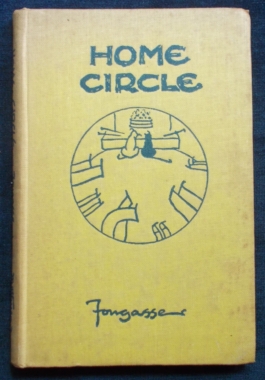
Home Circle: Fougasse
$15.00A wonderful little book of cartoons on the joys of everyday life in wartime, with some good sly social comments on the little human pomposities of the time. -
 Are You Irish Or Normal? Sean O'Grada. O'Grada traces the history of the Irish in his own inimitable fashion, from many centuries B.C. (The First Irishman was a Greek) through the 9th, 10th and 11th centuries (A Man's Best Enemy is His Neighbour - And Where Was The O'Neill?) into the 15th and 16th centuries (A Good Sharp Axe Makes Divorce Permanent) and beyond. Now Listen, Mate! John O'Grady: O'Grady sez: These essays, or whatever they may be, represent my thoughts and conclusions on various things and people. My eldest son wanted me to write my autobiography: "The story of your life, Pop" he said. "And tell the truth." He can go and jump in Lake Burley Griffin. I offer instead some comment on what life has taught me. After sixty years of knocking around and being knocked about, a man acquires a sort of philosophy. Basically, mine is that nothing in life is worth getting steamed up about, and most things are good only for a laugh. Illustrated by Paul Rigby.
Are You Irish Or Normal? Sean O'Grada. O'Grada traces the history of the Irish in his own inimitable fashion, from many centuries B.C. (The First Irishman was a Greek) through the 9th, 10th and 11th centuries (A Man's Best Enemy is His Neighbour - And Where Was The O'Neill?) into the 15th and 16th centuries (A Good Sharp Axe Makes Divorce Permanent) and beyond. Now Listen, Mate! John O'Grady: O'Grady sez: These essays, or whatever they may be, represent my thoughts and conclusions on various things and people. My eldest son wanted me to write my autobiography: "The story of your life, Pop" he said. "And tell the truth." He can go and jump in Lake Burley Griffin. I offer instead some comment on what life has taught me. After sixty years of knocking around and being knocked about, a man acquires a sort of philosophy. Basically, mine is that nothing in life is worth getting steamed up about, and most things are good only for a laugh. Illustrated by Paul Rigby. -

Being the Chronicle of the Wars of Montrose as Seen By Martin Somers, Adjutant of Women in O'Cahan's Regiment. Surgeon and adjutant of women in O'Cahan's Irish regiment, warring in Scotland with Montrose, is Martin Somers, better exponent of swordplay than of surgery. In his adventurous wardship of this ill-fated company of women, in the strengthening of the line against the forces of the Covenant, his dexterity and toughness is often decisive. This is a tale of keen endeavour, fury and tenderness. Also published as The Dark Rose.
-
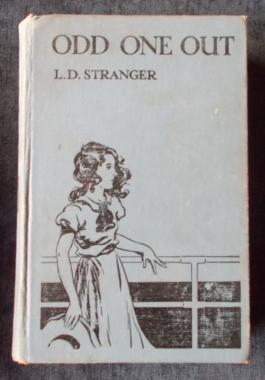
-

In the reign of James II, rejected love turns the exquisite, soulful Anthony Armadale into the grim, misogynistic outlaw Captain Midnight, the terror of the wealthy autocrats who consider themselves above the law. Encouraging him in his daring interventions between tyranny and and its victims, the little parson Aeneas Wade never guesses his identity. But the lovely Lady Clarissa Fane sees through the bitterness to the true man. This was Farnol's last book, finished in rough form before his death and edited for publication by his widow, Mrs. Phyllis Farnol.
-

 Mary and Tony's parents do not take them to the seaside as usual for their holiday. Instead, they are going to have their holiday at Fallow Farm where they'll learn about animals both tame and wild. This would not be a story with enough sophistication for modern children, but the illustrations alone make this a very worthwhile book.
Mary and Tony's parents do not take them to the seaside as usual for their holiday. Instead, they are going to have their holiday at Fallow Farm where they'll learn about animals both tame and wild. This would not be a story with enough sophistication for modern children, but the illustrations alone make this a very worthwhile book. -
 Our story open thus: In the first quarter of the thirteenth century, the evil doings of King John were yet fresh in the minds of men all over England, and the indirect consequences of his evil deeds were still acutely felt, and nowhere more than in Bedfordshire, where the scene of our story is laid. The county itself has much altered in appearance since that period. Great woods, intersected by broad, soft green lanes, overran its northern portion. Traces of these woods and roads still survive in Puddington Hayes and Wymington Hayes, and the great broad "forty-foot." South of this wild wooded upland, one natural feature of Bedfordshire remains unchanged. Then, as now, the Great Ouse took its winding, sluggish course from southwest to north-east across the county, twisting strangely, and in many places turning back upon itself as though loath to leave Bedfordshire. Some fifteen miles from point to point would have taken it straight through the heart of the little county, whereas its total course therein is more like fifty. One poetic fancy likens the wandering stream to a lover lingering with his mistress...
Our story open thus: In the first quarter of the thirteenth century, the evil doings of King John were yet fresh in the minds of men all over England, and the indirect consequences of his evil deeds were still acutely felt, and nowhere more than in Bedfordshire, where the scene of our story is laid. The county itself has much altered in appearance since that period. Great woods, intersected by broad, soft green lanes, overran its northern portion. Traces of these woods and roads still survive in Puddington Hayes and Wymington Hayes, and the great broad "forty-foot." South of this wild wooded upland, one natural feature of Bedfordshire remains unchanged. Then, as now, the Great Ouse took its winding, sluggish course from southwest to north-east across the county, twisting strangely, and in many places turning back upon itself as though loath to leave Bedfordshire. Some fifteen miles from point to point would have taken it straight through the heart of the little county, whereas its total course therein is more like fifty. One poetic fancy likens the wandering stream to a lover lingering with his mistress... -
 A charming collection of myths, legends and tales with giants, magic, saints, robust friars, Robin Hood and miracles.
A charming collection of myths, legends and tales with giants, magic, saints, robust friars, Robin Hood and miracles. -
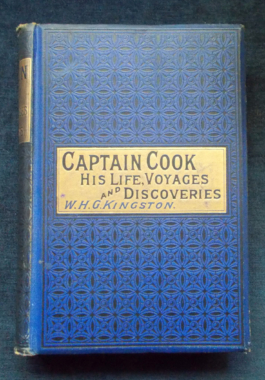 This book is not a series of fictitious adventures of the great Captain Cook, the eighteenth century navigator and explorer, but a straightforward statement of his life and achievements. It can be classed as a biography, although Cook's life can be read as a well-written book of adventures. There's extracts from Cook's logs describing, among other things, life in the South Pacific in the 18th century. An extraordinary narrative of life, trade and discovery, his success at preventative measures for scurvy and his ability to create long lasting respect from islanders, kings and chiefs from Tahiti to Hawaii.
This book is not a series of fictitious adventures of the great Captain Cook, the eighteenth century navigator and explorer, but a straightforward statement of his life and achievements. It can be classed as a biography, although Cook's life can be read as a well-written book of adventures. There's extracts from Cook's logs describing, among other things, life in the South Pacific in the 18th century. An extraordinary narrative of life, trade and discovery, his success at preventative measures for scurvy and his ability to create long lasting respect from islanders, kings and chiefs from Tahiti to Hawaii.


